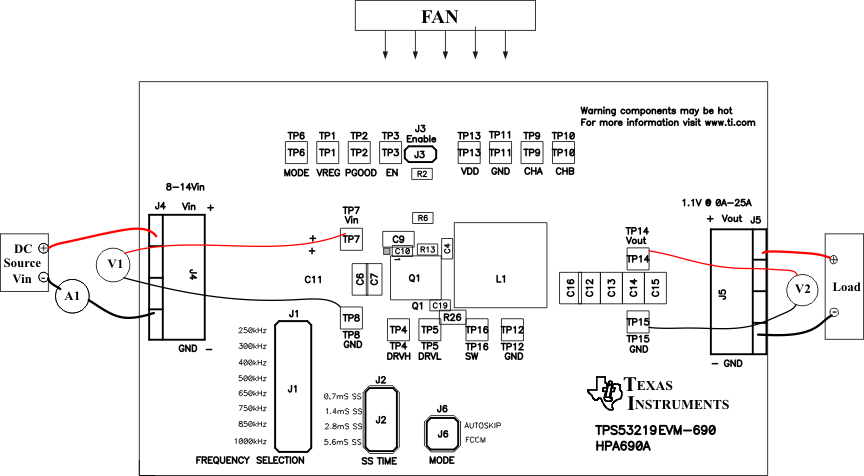SLVU431A January 2011 – December 2021 TPS53219
4.2 Recommended Test Setup
 Figure 4-2 TPS53219EVM-690
Recommended Test Setup
Figure 4-2 TPS53219EVM-690
Recommended Test SetupFigure 4-2 is the recommended test setup to evaluate the TPS53219EVM-690. Working at an ESD workstation, make sure that any wrist straps, bootstraps, or mats are connected referencing the user to earth ground before power is applied to the EVM.
Input Connections:
- Prior to connecting the DC input source VIN, it is advisable to limit the source current from VIN to 10-A maximum. Ensure that VIN is initially set to 0 V and connected as shown in Figure 4-2.
- Connect a voltmeter V1 at TP7 (VIN) and TP8 (GND) to measure the input voltage.
- Connect a current meter A1 to measure the input current.
Output Connections:
- Connect the load to J5, and set the load to constant resistance mode to sink 0 ADC before VIN is applied.
- Connect a voltmeter V2 at TP14 (VOUT) and TP15 (GND) to measure the output voltage.
Other Connections:
Place a fan as shown in Figure 4-2 and turn on, ensuring that air is flowing across the EVM.